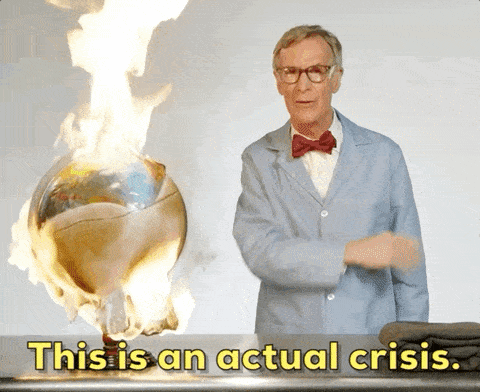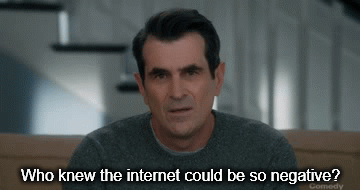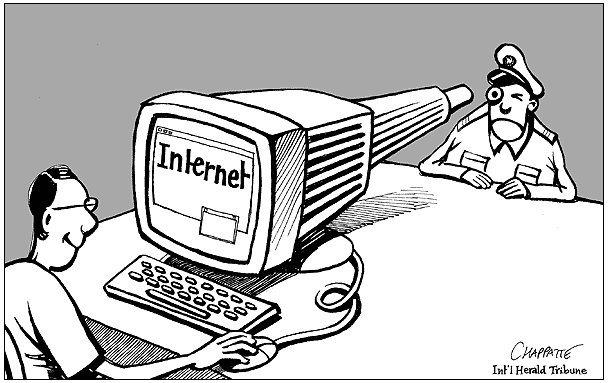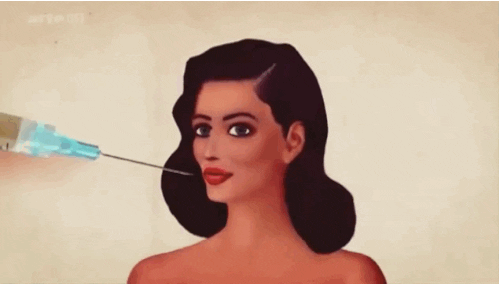Don't wanna be here? Send us removal request.
Text
Week 12 – Crisis in the Crowd: How Social Media Mobilises Communities in Disaster Response

During the last week of MDA20009: Digital Communities, we learned about one of the most promising arrivals of digital technology and human solidarity: crowdsourcing during crises. One of the ways through which this lecture helped reframe social media was not only as a means of connection or performance, but as a network of life-saving during times of emergency and trauma.
The concept of crowdsourcing, which Merriam-Webster describes as “the practice of soliciting ideas, content, or other contributions (as an online community)” is not new. Indeed, rewards to address social issues—what we today term as distributed problem solving—were introduced as early as the 18 th century. However, the possibilities of such networks have been radically increased and speeded up by digital media, particularly by such sites as Twitter, Facebook, and Ushahidi.
Among the most interesting cases presented was the Ushahidi, which is a site that lets people send live updates through SMS, Twitter and other social media to build crisis maps in real time. In the case of the 2010 Haiti earthquake, this system assisted emergency responders in determining where assistance was required most- demonstrating the life or death usefulness of confirmed, crowd sourced information (Ford, 2012).
The lecture also determined how the content created by citizens, pictures, tweets, and videos have taken center-stage in the way the masses interpret and respond to crises. Due to the described above, social networking sites have become places where individuals derive meaning out of traumatic situations, express their feelings and emotions and keep the authorities in check as observed by Horbury and Hughes (2010). This change of traditional broadcast to participatory crisis communication was particularly evident in relation to the example of 2011 Queensland floods, in which the @QPSMedia Twitter account was transformed into an important, responsive source of official information.
But there exist difficulties. Real time verification of information may be challenging. Emergency organisations are frequently hierarchical and sluggish organisations, and they cannot keep up with the decentralised, horizontal flow of social media data (Anderson, 2012). These are important questions: Is social media able to be fully incorporated into formal emergency management? And what when false news is distributed as fast as genuine news?
Finally, the current week showed that digital communities may turn into resilient, adaptive publics in a crisis, self-organising, emotionally invested and highly collaborative. Personally, it is quite an intense reminder of what digital citizenship is actually about: it is not only sharing and posting but also playing a significant role in the welfare of other people.

References (Harvard style):
Anderson, M., 2012. Integrating social media into traditional emergency management command and control structures: The square peg into the round hole? Strategic Communications, CFA Victoria.
Ford, H., 2012. Internet Infrastructure as a Public Good. In An Education in Facebook? Higher Education and the World's Largest Social Network. Routledge, pp. 35–52.
Horbury, A. & Hughes, J., 2010. Social media after Black Saturday. In Beyond the Emergency: A Multidisciplinary Approach to the Black Saturday Fires. Melbourne: Monash University Publishing, pp. 144–155.
Merriam-Webster, 2023. Crowdsourcing. Available at: https://www.merriam-webster.com/dictionary/crowdsourcing [Accessed 27 May 2025].
0 notes
Text
Week 11 – Social Media Conflict: Governance, Harassment, and the Politics of Participation

The lecture this week was a game changer in terms of the discourse that would previously focus on digital citizenship as empowerment to digital citizenship as contested space. Although we tend to praise online communities and their ability to bring people closer and encourage inclusion, this week showed us that conflict is equally regarded as the staple of the life in digitral spaces. Actually, it is generally decided by invisible structures of power, policy, and platform management who gets to play, and who feels secure enough to play.
One of the themes was online bullying. Harassment is not simply random trolling, as was described in the lecture it is often organized, gendered, and systematic. Research continues to indicate that women and gender-diverse people are the groups most likely to suffer online abuse (Haslop, O’Rourke & Southern, 2021; Gardiner et al., 2016). As mentioned in Marwick & Caplan (2018), the Gamergate controversy was one of the revelations of how the internet could be weaponised, and methods such as doxing and image-based abuse became ways of networked harassment.
This brought significant concerns on the accountability of the platforms. Although certain strides of legislation have been achieved, e.g., the Online Safety Act 2021 in Australia, the majority of social media platforms are yet to take harassment seriously. According to a 2021 study by Pew Research, 79 percent of users think platforms are performing poorly at addressing the abuse. This is indicative of a bigger problem: digital governance is fractured between national legislature, company guidelines and user moderation.
The issue that I found especially informative was the voice on corporate social responsibility (CSR) in face of influencer-brand collaborations. The influencers deal with a specialized kind of harassment, and the brands should not only make money on their reach but also contribute to their security and health (Littleton in Crowther & Rayman-Bacchus, 2016). Providing social media support team and offering solidarity to the public is no longer a choice, but a moral conduct.
Yet the solutions are not limited to legal and corporate strategies. As it was also outlined in the lecture, humour, advocacy, and community resistance can become potent tools of digital citizenship (Vitis & Gilmour, 2016). Be it feminist TikToks or online platforms reform movements, users are not only victims, but also the dual agents of change.
An important lesson that I learned this week as a digital citizen is that participation is not just enough. It implies taking initiative to ensure that digital places are safer and more fair. And sometimes, that involves facing straight into conflict.

References (Harvard style):
Gardiner, B. et al., 2016. The dark side of Guardian comments. The Guardian. Available at: https://www.theguardian.com/technology/2016/apr/12/the-dark-side-of-guardian-comments
Haslop, C., O’Rourke, S. & Southern, R., 2021. Online harassment and identity. Feminist Media Studies, 21(6), pp.854–869. https://doi.org/10.1080/14680777.2020.1825511
Marwick, A.E. & Caplan, R., 2018. Drinking male tears: Language, the manosphere, and networked harassment. Feminist Media Studies, 18(4), pp.543–559. https://doi.org/10.1080/14680777.2018.1447344
Vitis, L. & Gilmour, F., 2016. Dick pics on blast: A woman’s resistance to online sexual harassment using humour, art and Twitter. Crime, Media, Culture, 13(3), pp.335–355. https://doi.org/10.1177/1741659016632942
Crowther, D. & Rayman-Bacchus, L., 2016. Perspectives on Corporate Social Responsibility. Routledge.
0 notes
Text
Week 10 – Playing Together: Gaming Communities, Streaming Culture, and Digital Belonging

During this week’s guest lecture, Taylor Hardwick discussed digital gaming communities and how these communities arise from play, personal identity, and technology. Today, people are recognising that games help people bond, become engaged, and share their knowledge.
An important idea that caught my attention was “knowledge communities”. For Jenkins (2006), these are called transient communities created by fans based on their interests and feelings. Here, people discuss the game by swapping strategies, trading thoughts on its plot, and forming friendships online. The main strength of these communities is that both playing and making things together keeps them going.
Among other things, Hardwick pointed out that Twitch and YouTube Gaming have made gaming a sport people often watch instead of play. Through streaming, active viewers are able to connect very closely to their favorite streamers. They are no longer only a source of entertainment; they also turn into digital “third places” for people to meet informally.
But the lecture made sure to discuss some of the problems in gaming culture. The image of the usual gamer as a white man prevents everyone from being fully included both in sports and everyday gaming activities. It fits with how scholars explain gender conflict and the toxic meaning of being a “gamer” (Consalvo, 2012). Although games are for anyone, some people still feel like they are not accepted by others.
It also talked about how people can modify games with modding to help them create unique experiences. This trend clearly shows that digital culture has moved from having consumers to people who actively rework and change the content they consume (Ritzer & Jurgenson, 2010). It proves that gaming communities involve following the rules, but they mostly focus on changing them.
All in all, I realized that playing videos games is more than just finding a chance to escape or compete. It involves people, new ideas, and important reflection. Instead of only using online communities, we should help make them more safe and for everyone to benefit.

References (Harvard style):
Consalvo, M., 2012. Confronting toxic gamer culture: A challenge for feminist game studies scholars. Ada: A Journal of Gender, New Media, and Technology, 1. Available at: https://adanewmedia.org/2012/11/issue1-consalvo/
Jenkins, H., 2006. Convergence Culture: Where Old and New Media Collide. New York: NYU Press.
Ritzer, G. & Jurgenson, N., 2010. Production, consumption, prosumption: The nature of capitalism in the age of the digital ‘prosumer’. Journal of Consumer Culture, 10(1), pp.13–36. https://doi.org/10.1177/1469540509354673
Sotamaa, O., 2010. When the Game Is Not Enough: Motivations and Practices Among Computer Game Modding Culture. Games and Culture, 5(3), pp.239–255. https://doi.org/10.1177/1555412009359765

0 notes
Text

This week, we studied the role of filters as huge forces in our culture and technology that play a part in our views of ourselves and others. From Lauren Miller’s lecture, it was clear that filters have developed past being just a funny visual effect. Instead, they quietly influence how female and queer people look when they are online.
Taking Rettberg’s (2014) thought into account, we notice that filters alter more than your photos and encourage following well-known beauty trends in a limited way. In the same way, filters give us personality traits by hiding some things, as coffee filters add an extra flavour when used. Their influence shows us to look and act in line with algorithmic choices about beauty, such as smooth complexion, identical features, and whiteness, as two writers refer to as “non-actual pretense of natural beauty” (Lavrence & Cambre, 2020).
Cases of Snapchat dysmorphia caused me to feel more concerned. The idea that many individuals want plastic surgery to match their filtered selfies (Rajanala et al., 2018) illustrates the effect the digital life has on people’s appearances. Thanks to objectification theory, people can start to judge their worth by their appearance as seen by other people.
Importantly, the lecture explained that filter culture can differentiate and leave out some people depending on their gender. Women and girls are supposed to enhance their appearance with filters, while men generally use filters to have fun with their pictures. Even so, people who don’t identify as heterosexual come across as suspicious to algorithms, causing them to become harder to find online according to Bishop (2021).
At the same time, Rettberg explains that filters are sometimes means for people to challenge the system. Filters make it clear how they support the very systems they pretend to challenge. Taking a selfie can mean accepting or rejecting these pressures, since it helps people feel more confident with their looks.
This week proved to me that filters can affect how we see things. Knowing how these sites affect people and are used by them can help you protect digital rights and seek greater diversity.
References:
Bishop, S., 2021. Influencer management tools: Algorithmic cultures, brand safety, and bias. Social Media + Society, 7(1). Available at: https://doi.org/10.1177/20563051211003066
Duffy, B.E. & Meisner, C., 2022. Platform governance at the margins: Social media creators’ experiences with algorithmic (in)visibility. Media, Culture & Society. Available at: https://doi.org/10.1177/01634437221111923
Fredrickson, B.L. & Roberts, T., 1997. Objectification theory: Toward understanding women's lived experiences and mental health risks. Psychology of Women Quarterly, 21(2), pp.173–206. Available at: https://onlinelibrary.wiley.com/doi/abs/10.1111/j.1471-6402.1997.tb00108.x
Lavrence, C. & Cambre, C., 2020. “Do I look like my selfie?” Filters and the digital-forensic gaze. Feminist Media Studies, 20(5), pp.622–638. Available at: https://www.tandfonline.com/doi/full/10.1080/14680777.2020.1750779
Rajanala, S., Maymone, M. & Vashi, N., 2018. Selfies—living in the era of filtered photographs. JAMA Facial Plastic Surgery, 20(6), pp.443–444. Available at: https://doi.org/10.1001/jamafacial.2018.0486
Rettberg, J.W., 2014. Seeing Ourselves Through Technology: How We Use Selfies, Blogs and Wearable Devices to See and Shape Ourselves. Basingstoke: Palgrave Macmillan. Available at: https://link.springer.com/book/10.1057/9781137476661

1 note
·
View note
Text

We examined in MDA20009: Digital Communities this week how issues around digital citizenship, body perception and appearances on social media sometimes meet. Due to “microcelebrity” culture, attention and visibility matter and now our bodies often say it all.
The lecture pointed out that, by using certain body poses, specific parts of their appearance and similar editing tools, influencers end up fitting into a typical kind of beauty, an idea known as aesthetic labour (Marwick, 2013). Our online actions don’t just show who we are inside—they are made for commercial purposes by the social media system.
What caught my attention was pornification, where users start using the hyper-sexualised styles we see in mainstream pornographic videos. Pressure on female influencers makes them present femininity in a very ideal way: with defined cheekbones, tiny waists and refined jawlines (Drenten & Gurrieri, 2019). Men who are influencers often focus on looking strong and muscular. Having unrealistic assumptions about one’s body is actually harmful.
This culture has led to an increase in Body Dysmorphic Disorder (BDD) and identity dissonance. When we try to present ourselves in online photos the same way we really look, we feel more unhappy. Even well-meaning public health campaigns may, by accident, make impossible standards seem normal (Dobson et al., 2018). So, digital citizenship also involves becoming aware of our actions in relation to these online norms.
Fairness plays an important role too. Many marginalised groups, especially LGBTQ+ content creators, are not shown in search results. Since they do not follow the typical branding rules set by society, the posts of LGBTQ bloggers are usually shadowbanned or they do not get much exposure (Duffy & Meisner, 2022). Being hard to notice puts a dent in the claims that digital platforms make about including everyone.
Looking back on this week, social media appears as an influencer, altering culture, body perceptions and health behaviours. Supporting diversity and not giving in to internet trends is a cultural resistance that is also very important for public health.
References
Dobson, A., Carah, N. & Robards, B., 2018. Digital Intimate Publics and Social Media. Cham: Palgrave Macmillan.
Duffy, B.E. & Meisner, C., 2022. Platform governance at the margins: Social media creators’ experiences with algorithmic (in)visibility. Media, Culture & Society. Available at: https://doi.org/10.1177/01634437221111923 [Accessed 27 May 2025].
Drenten, J. & Gurrieri, L., 2019. Sexualized labour in digital culture: Instagram influencers, porn chic and the monetization of attention. Gender, Work & Organization, 26(4), pp.499–515. https://doi.org/10.1111/gwao.12306
Marwick, A.E., 2013. Status Update: Celebrity, Publicity, and Branding in the Social Media Age. New Haven: Yale University Press.

0 notes
Text

This week, the lecture connected digital citizenship with what is often the most polluting and controversial area in our world—fashion. It made me reconsider, as being a good digital citizen goes further than treating people well on the internet. It’s important to be aware of what we post, search for and how we participate in new movements like slow fashion.
The concept of slow fashion encourages people to care more about the planet by fighting the increasing disposability found in the fast fashion industry. This means recommending eco-friendly products, fair working conditions and opposing clothing trends sold en masse. Domingos et al. (2022) explain that slow fashion chooses quality and mindful production, rather than fast output.
Online platforms are now key parts of this campaign. Venetia La Manna and Tiffany Ferguson use Instagram and YouTube to talk about unethical brands and at the same time show people real alternatives through their thrift style, calls for better brands and tips on living sustainably. They follow what Vromen (2017) labels “new citizen norms,” where what people do and how they live shows their activism.
They reinvent the idea of accountability for businesses. Instead of depending on changes in policies, they use their social media to talk about transparency, organize their fans and avoid supporting such practices. Using hashtags #WhoMadeMyClothes and #SlowFashion, garment industry activists unite and promote collective actions.
The environmental data was every bit as worrying. Global fashion emits as much carbon as the combined traffic from international aviation and shipping and this makes up 10% of all industrial emissions (Statista, 2022). Social media helps make this harm visible and influence people’s thinking, mainly among Gen Z, who care strongly about what is right and wrong.
Because likes can influence trends, it’s important for us to carefully think about our clothing, posts and participation. Experts in sustainability say the slow fashion movement isn’t only about dressing—it helps us reconsider who we are, what we care about and the effects we can have on the global scene through digital activity.

References:
Domingos, F., Ramos, P., Proença, S. and Rodrigues, P., 2022. Slow fashion: Sustainable strategies and consumer behavior. Journal of Fashion Marketing and Management. [Available via Swinburne Library].
Statista, 2022. Global apparel market value 2020-2026. Available at: https://www.statista.com/statistics/274506/value-of-the-global-apparel-market/ [Accessed 27 May 2025].
Vromen, A., 2017. Digital Citizenship and Political Engagement. London: Palgrave Macmillan.
Zappavigna, M., 2012. Discourse of Twitter and Social Media: How We Use Language to Create Affiliation on the Web. London: Bloomsbury.
0 notes
Text

The lecture this week in MDA20009: Digital Communities got me to question how the digital age affects citizenship. These days, digital citizenship isn’t just about being safe online or understanding online rules; it covers rights, duties and who we become online.
It was highlighted this week that digital platforms now double as public areas for people to discuss politics and come together. It’s true—Social media is now used more for activism and holding others to account than just sharing stories. #MeToo, #BlackLivesMatter and #FreeBritney have shown that hashtags can quickly gather people from different parts of the world to join the same conversation. They aren’t just flash-in-the-pan fads—they usually have a deliberate, political purpose.
What really stood out to me was recognising that platforms change our interactions by becoming important parts of our daily lives. Algorithms not only give you suggestions but also decide which stories attract attention and which ones are ignored. As explained by Helmond (2015), Instagram and Twitter are now more than sites for communicating—they direct how users behave, often without being directly noticed.
This week also looked at how political involvement is changing. Joining parties or unions used to be the main way to participate, but now most people choose to sign petitions, follow politicians or spread information on social media (Theocharis et al., 2023). While people who dismiss this as slacktivism might be wrong, these online gestures definitely influence real-world change.
I discovered that going along with the rules while using technology plays only a small part of being a good digital citizen. It requires you to gather information, join in and think deeply about the way our digital lives evolve.

Bruns, A. & Burgess, J., 2015. Twitter hashtags from ad hoc to calculated publics. In Rambukkana, N. (ed.), Hashtag Publics: The Power and Politics of Discursive Networks. Peter Lang.
Helmond, A., 2015. The Platformization of the Web: Making Web Data Platform Ready. Social Media + Society, 1(2). Available at: https://doi.org/10.1177/2056305115603080
Theocharis, Y., Barberá, P., Fazekas, Z. & Popa, S.A., 2023. Digital Platforms and Democratic Life. Nature Human Behaviour, 7, pp.10–18. Available at: https://www.nature.com/articles/s41562-022-01482-z
0 notes
Text
Week 5 Reality TV

We spent Week 5 of MDA20009 looking at how reality television influences digital publics and fans. At the beginning, reality TV could seem shallow or regarded as low culture, yet what we have learned from our lecture and the assigned readings is that this area of media involves many layers and social relevance.
What stood out to me this week was the strange popularity of reality TV. No other genre is as popular nor as harshly judged as horror. While many people rank reality TV last in surveys, it consistently comes out on top in ratings. The Block ended with 1.8 million viewers, compared to The Voice which had 2.4 million tuning in (AdWeek, 2021). You could say a lot about how we view “trash TV” because it influences and reflects the things society considers normal or accepted.
Reality TV is particularly important to digital communities because it helps to create digital publics and groups of fans. Programs such as MAFS and The Bachelor create lots of interest and online conversations. On these sites—including forums, special Instagram accounts and the #MAFS hashtag—people discuss their views, share their identities and talk about society (Graham & Hajru, 2011; Brennan & Gudelunas, 2018). To some extent, sharing opinions on reality TV is a type of daily participation—blending personal and political matters.
The topic of intimacy and fame also touched me in the book. Reality TV stars fade the difference between regular people and famous celebrities, so viewers often feel like they know people who are strangers. Stefanone et al. explain that social media gives fans the opportunity to interact with reality TV stars as events unfold. Still, this kind of “fame” comes with its own set of problems. Some people who compete use their celebrity to launch careers, but for many, being on TV opens them up to online bullying, as the public takes on the roles of all three.
What stood out most about this week was when we discussed fandom as identity. In their 2011 report, Gruzd, Wellman and Takhteyev say that joint language, familiar rituals and shared emotions are what bring fans closer. Taking part in the Survivor community identifies someone as a fan and shows where they belong.
All in all, I have come to see that reality television can reveal details about online groups, personality and politics. People don’t simply watch these shows; they also discuss, revisit and think about them using the internet. With Web 2.0, fans are no longer just participating; they also have real power.

References:
AdNews, 2022. Top 10 TV programs in Australia 2021. Available at: https://www.adnews.com.au/news/the-top-10-tv-programs-of-2021 [Accessed 27 May 2025].
Statista, 2022. TV genres U.S. adults have the most unfavorable opinion of 2018. Available at: https://www.statista.com/statistics/726361/us-unfavorable-tv-genres/ [Accessed 27 May 2025].
0 notes